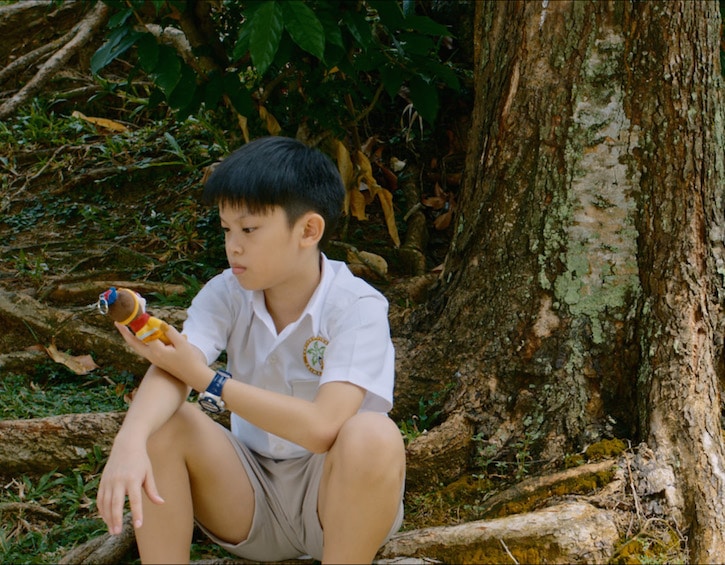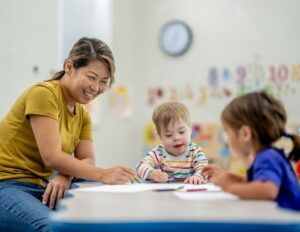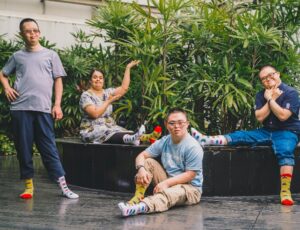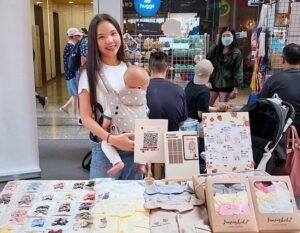

We chat with local author Eva Wong Nava about her new children’s book that’s told from the perspective of a boy with Autism
Did you catch the recent Singapore-made film The Wayang Kids, mama? It’s about a group of primary school children overcoming cultural and language barriers to participate in an international Chinese opera (Wayang) performance. The movie focuses on a student on the Autism spectrum who, with the support of his classmates and his own perseverance, is able to shake off self-doubts and shine on stage.


We recently sat down with author Eva Wong Nava, who wrote the companion book, Open: A Boy’s Wayang Adventure, to find out what motivated her to get involved with the project. We also talked about the challenges of putting herself in the shoes of a young boy with Autism, and she provides some fantastic tips on teaching empathy to neurotypical children to help them better understand and support classmates with different needs and abilities. Get ready for a truly enlightening and inspiring read, and be sure to pick up a copy of Open at a local bookstore to read with your kids!
Do you have any personal experience with Autism?
My personal experience with Autism is a distant one, I must admit. I have two neurotypical daughters, that doesn’t make me a parent of autistic individuals. But, I have a very good friend, Agnes, whose son is autistic. When I was living in London, I spent a lot of time with Agnes, seeing her almost on a daily basis. By hanging out with her and her family, I’ve come to learn how challenging it is to parent an individual on the autism spectrum.
I saw the difference that support within the community, for example, in schools, libraries and other public centres, made to the lives of parents like Agnes. I feel privileged to have lived and learned vicariously through her journeys. Agnes and I don’t see each other so much anymore because I now live in Singapore. But I’m still living and learning from her during my travels back to London. Besides Agnes, I have other friends who are also parents to autistic children. I may not see these friends as often but I’m aware of how they live and manage their lives.


You’ve drawn praise for your ability to write from the perspective of a boy on the Autism Spectrum. What research did you do to inform your writing?
As a writer, research is very important. To write about a fictional character like Benjamin Oh or Open, I’ve had to talk to people who are parenting individuals on the spectrum; their stories are precious. The Internet and I became best friends. There are informative articles galore that support parents with children on the spectrum. I read these articles as part of my research. I can say that my research on autism started way before this book. Having spent so much time with Agnes and her son, I observed how their lives are impacted by ASD. My own curiosity also led me to find out about autism related conditions, like how certain food and noises can affect someone on the spectrum. These nuggets of knowledge found their way into the book.
Along the same lines, how did you find writing from the perspective of the other children? Was it a challenge balancing empathy with children’s natural reactions to ‘otherness’ and learning to accept differences?
The craft of writing entails the ability or capacity to step into the shoes of ‘the other’. There are four other children in the book that are part of Open’s world. In order to write from these children’s perspectives, I allowed my inner child to lead. I asked myself what would I do or say if I were Ali or Raja or Bei Bei or Paula-Bao-Er? They are representations of children in real life, and aspects of the child in us. I allowed these individual characters to speak to me. Their reactions and responses would sometimes come to me in dreams, or I’d have a sudden flashback to a time when I was 10 and reacted or responded in a certain way to specific situations.
I think all children have the capacity to empathise, even autistic children, to a smaller or larger extent. But children’s reactions are often ‘natural’, like you’ve said, because they haven’t learnt to hide their emotions yet like adults have. There is something precious about this because it is a sign of [their] innocence.
‘Difference’ is an adult concept, in my view. I don’t think young children see other children as different from themselves. It’s not until the age of reasoning (from around the age of 7 and up) that children start to see themselves as different to their friends or their friends as different from them. Differentiation is a psychological construct that is both a natural and necessary process in childhood development. But children also understand that there are similarities in this difference; this is a natural inclination, it is part of being human.


We love how Open’s artistic abilities and the class’s performance of a Chinese opera help bridge the divide with his classmates and allow him to overcome some of his fears. Have you seen examples of this in real life?
Research has shown that all children benefit from education that includes the learning of arts-based subjects, like dance, drama and theatre. Autistic children benefit greatly from an arts-based or arts focused curriculum. Of course, it is important to bear in mind that all autistic children are individuals and each has his/her preferences of activities. Some autistic children have a keener sense of spatial intelligence and may be suited for activities that include robotics, as a specific example. Others may be less inclined to such a specific activity and may prefer activities where they can focus on their bodies in relation to the space they’re occupying. This could include going to playgroups or playgrounds where children can run, climb and play safely together. Having said this, I’m aware that there are children on the spectrum who may find it challenging to take part in any activity at all.
Drama as a form of therapy not only benefits children, it benefits adults, too. An article in the New Scientist confirmed the benefits of using drama to teach autistic children empathy, or what is known as theory of mind, which is the ability to infer what others are thinking and feeling. Theory of Mind is said to be less developed in autistic children. This pilot study—Imagining Autism—showed that it is plausible that some autistic children can learn social interactions from participating in drama.
In my view, the best way to encourage empathy in children is to have conversations with them. Ask if they have heard of the term ‘autism’? Perhaps they have a classmate or schoolmate who is a ‘special needs’ individual; ask your children what they understand about special needs. Equip children with the vocabulary to talk about special needs beyond the usual words like ‘naughty’, ‘attention-seeking’, ‘different’, ‘weird’, ‘funny’ and other words with negative connotations. Arm your children with words like ‘autistic individual’, ‘someone on the spectrum’, ‘living with autism’ rather ‘battling autism’ or ‘neurotypical children’ instead of ‘normal children’. These help children learn positive ways to refer to the condition.
Explain to your children that autistic children cannot help it when they “misbehave”; they have meltdowns as a way to cope with over-stimulating external situations or stimuli. Ask your children what they would do if they have had enough; ‘what-if-that-were-you’ questions help children get into the heads and shoes of the other person.


Are there other books or movies (either for adults or kids) that you would recommend parents/families check out?
Bridging image and page is not new in the literary and movie world. A film that has been adapted into a book, both done concurrently but as separate products, is The Shape of Water [which won Best Picture at this year’s Oscars]. My elder daughter was very impressed by it and is now going to read the book, which will allow her to get into the heads of the voiceless characters in the film. Similarly, Open – A Boy’s Wayang Adventure allows viewers of the film to enter Open’s world through the page.
War Horse is both a book and film. The book was written by Children’s Laureate, Michael Morpurgo, published in 1982 and the film was produced in 2011 by Steven Spielberg. In this case, I recommend that children read the book first and then watch the film. Similarly, The Book Thief is another favourite book and film. In these cases, the book and movie were developed separately. In this case, it’s always best to read the book before watching the movie. This is my teacherly recommendation.
I recently read Wonder by R J Palacio. Truth be said, I read it together with my second daughter who is in Grade 6. The book needs no introduction, having been made into a class reader for Grade 5 classes and up in America. It was also recently made into a movie, starring Julia Roberts, Owen Wilson and Richard Tremblay. I’ve yet to watch the film, but I love the book because Wonder was written to raise awareness of facial difference, a condition known medically as Treacher Collins Syndrome. Open – A Boy’s Wayang Adventure was also written with a similar message in mind: to raise awareness of a neurological condition—autism.
Thank you so much for such a thoughtful interview, Eva! For more on what Eva’s up to, be sure to check out her Facebook page.






 View All
View All





 View All
View All








 View All
View All





